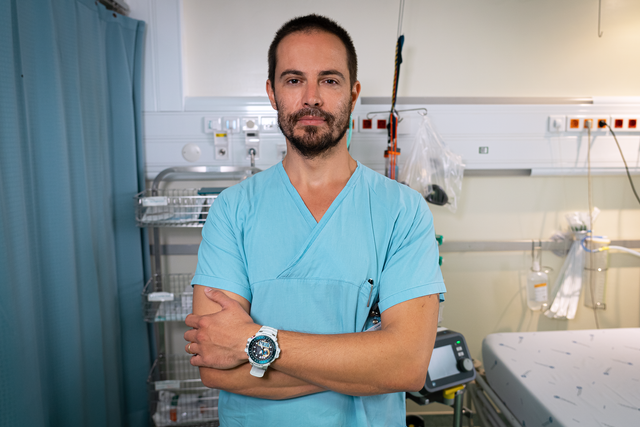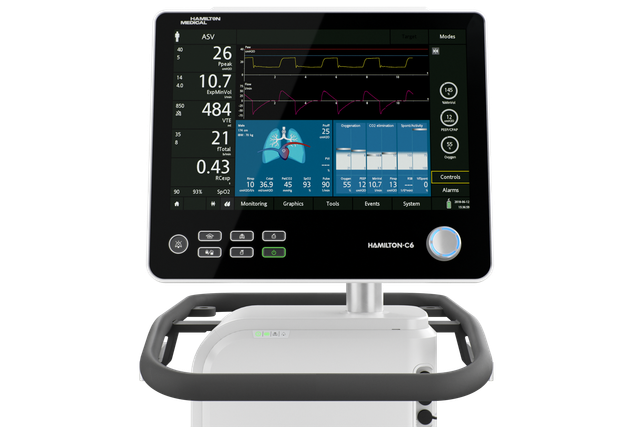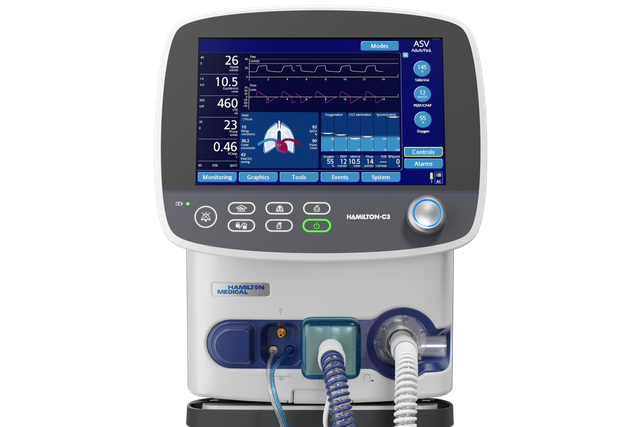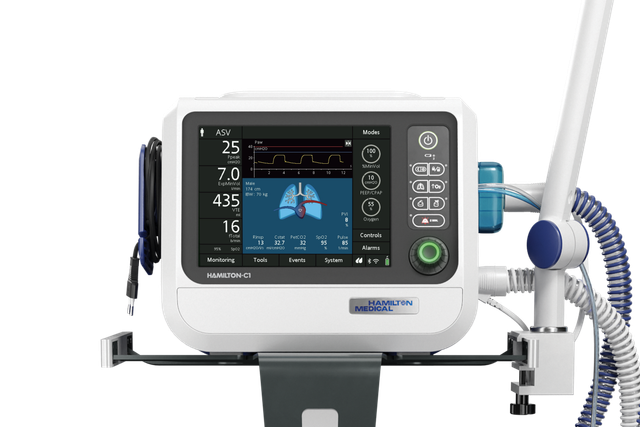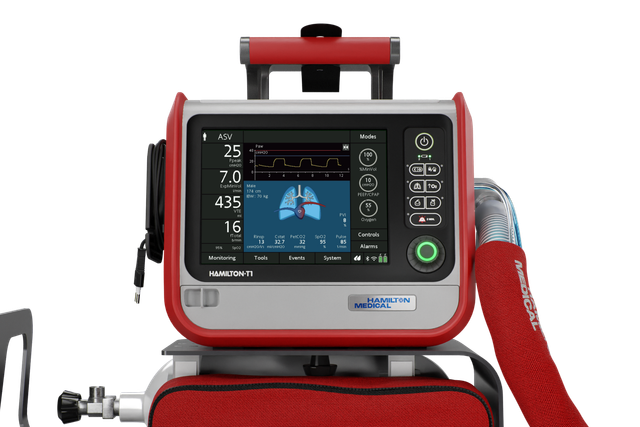
Беспрецедентное удобство эксплуатации! Преимущества INTELLiVENT‑ASV
Благодаря интеллектуальному режиму вентиляции вам больше не нужно крутить рычаги. В режиме INTELLiVENT‑ASV сокращается количество ручных взаимодействий с аппаратом ИВЛ (
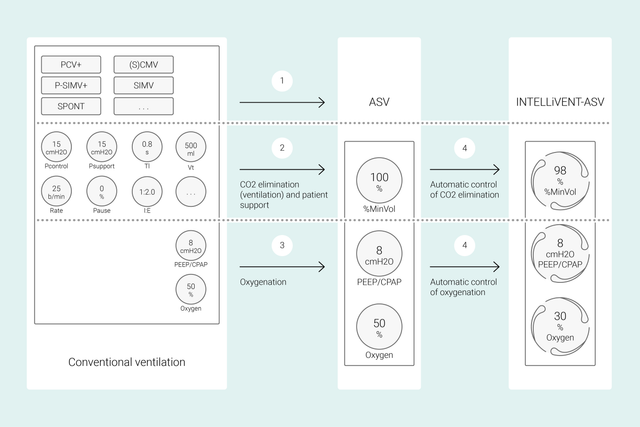
В чем отличия? Сдвиг парадигмы
В обычных режимах, чтобы достичь нужных клинических показателей, на аппарате ИВЛ нужно настраивать различные параметры: дыхательный объем или давление, частоту дыхания, FiO2, PEEP, а также время выдоха и вдоха. Кроме того, все эти параметры требуется часто проверять и регулировать.
А при использовании режима INTELLiVENT‑ASV главное ‑ определить целевые клинические показатели и стратегии оксигенации и вентиляции. После этого вы можете решить, в какой степени режим INTELLiVENT‑ASV будет управлять оксигенацией и вентиляцией, чтобы достичь заданных целей.
Затем режим INTELLiVENT‑ASV автоматически выбирает настройки аппарата ИВЛ, управляет переходом между пассивным и активным состояниями и активно поддерживает ваши протоколы отлучения с помощью функции «Быстрое отлучение».
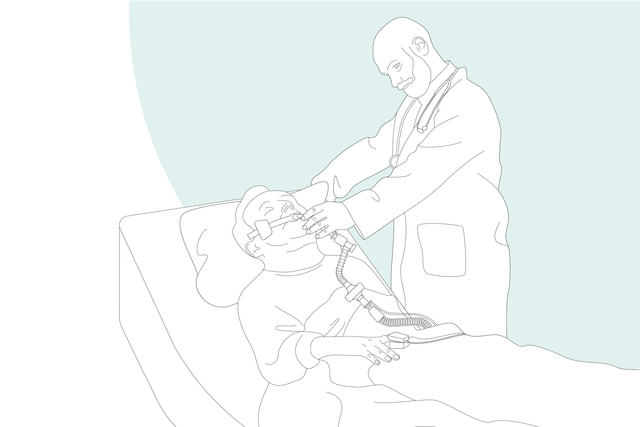
Подходит ли он моим пациентам? Для интубированных взрослых и педиатрических пациентов
Многочисленные международные исследования продемонстрировали безопасность и эффективность режима INTELLiVENT‑ASV в различных клинических сценариях ‑ от перенесенных операций на сердце (
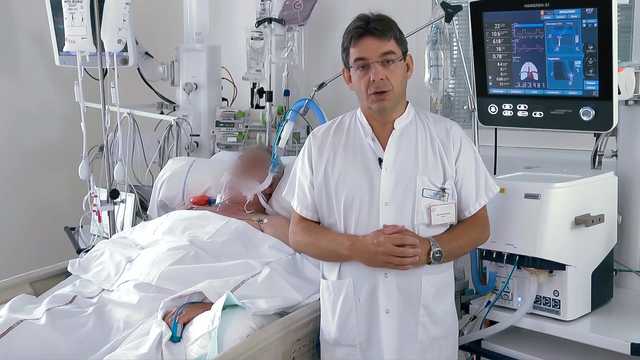
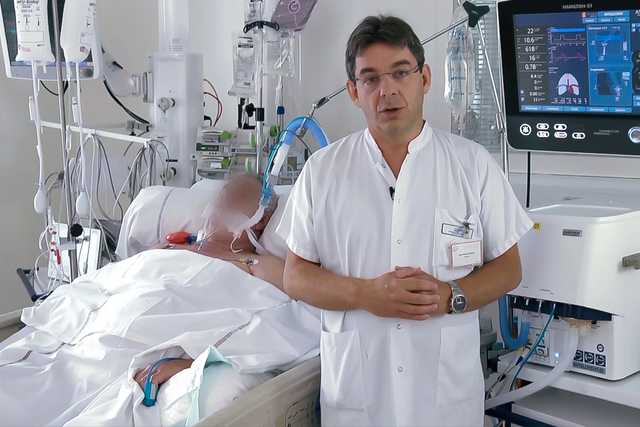
Как это работает? Демонстрация работы INTELLiVENT‑ASV у кровати пациента
В этом видео старший реаниматолог Жан‑Мишель Арналь кратко демонстрирует основные функции и настройки INTELLiVENT‑ASV на реальном пациенте отделения интенсивной терапии.
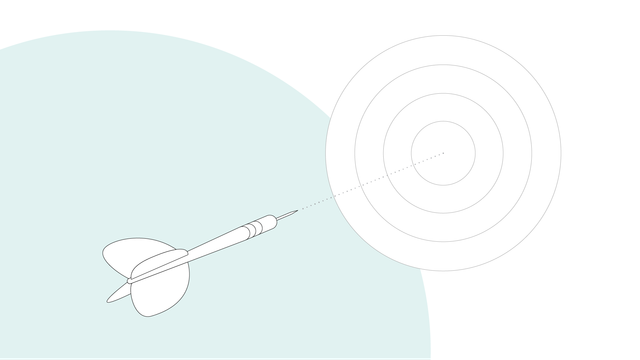
Готовься, целься, вентилируй! С чего начать
Сначала указываются рост и пол пациента и, при необходимости, особые состояния: ARDS, «Хр. Гиперкап.» или «Повр. мозга». Далее устанавливаются целевые показатели оксигенации (SpO2) и выведения CO2 (PetCO2) для пациента.
После этого доступны различные варианты тонкой настройки режима INTELLiVENT‑ASV. Например, можно указать, как будет осуществляться настройка PEEP: вручную либо автоматически в пределах заданного диапазона. После проверки или установки границ тревог все готово к вентиляции.

Наша цель ‑ пациент. Как регулировать вентиляцию
Режим INTELLiVENT‑ASV реализует выбранную вами стратегию лечения. Вместо того чтобы постоянно изменять отдельные настройки, вам достаточно следить за целевыми значениями и стратегией и при необходимости их корректировать.
В режиме INTELLiVENT‑ASV значения параметров для пациента устанавливаются и поддерживаются в заданном врачом целевом диапазоне; при этом настройки защиты легких сохраняются (
Эти данные поступают от трех датчиков: проксимальный датчик потока передает сведения о механике легких и активности пациента, а датчики SpO2 и CO2 ‑ об оксигенации и выведении CO2.
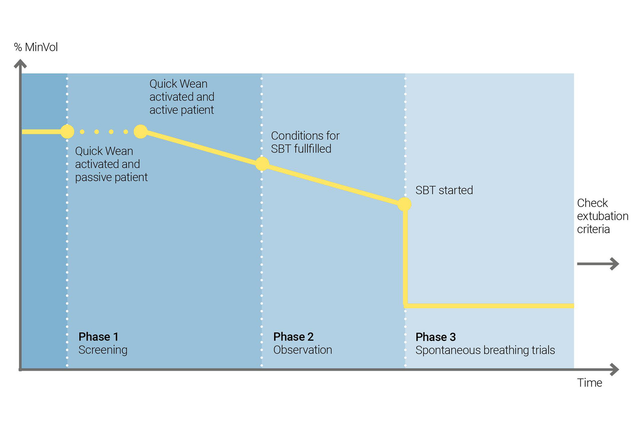
Отлучаем от аппарата ИВЛ! Как отлучать пациентов
Используйте функцию «Быстрое отлучение» в режиме INTELLiVENT‑ASV, чтобы реализовать свой протокол отлучения. Ее можно включить во время вентиляции, если пациент дышит спонтанно.
Чтоб настроить функцию «Быстрое отлучение», следует включить выполнение контролируемых тестов спонтанного дыхания (ТСД). Так вы определите, можно ли отлучать пациента от аппарата ИВЛ. вы задаете критерии для запуска ТСД, настройки, которые будут использоваться во время ТСД, а также критерии для их прерывания.
В режиме INTELLiVENT‑ASV всегда отображается история всех выполненных ТСД. Если ТСД выполнить не удается, режим INTELLiVENT‑ASV возвращается к предыдущим настройкам вентиляции.
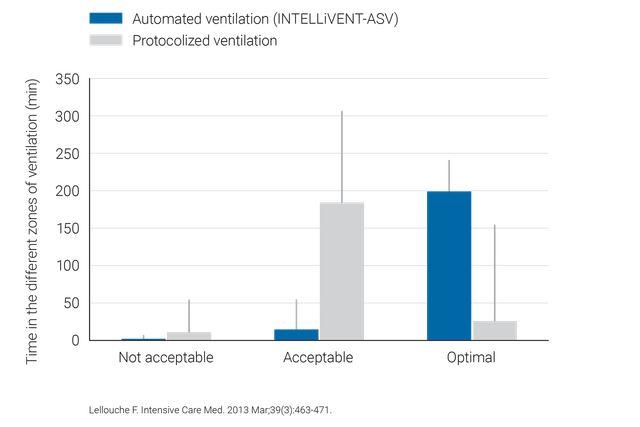
Каковы преимущества? Немного доказательств
Клинические исследования показали, что режим INTELLiVENT‑ASV выбирает безопасное рабочее давление (
Режим INTELLiVENT‑ASV требует меньше ручных настроек, чем обычная вентиляция, и, таким образом, помогает снизить нагрузку на медицинский персонал (

Полезно знать! Материалы курса обучения использованию режима INTELLiVENT‑ASV
Доступность
Режим INTELLiVENT‑ASV доступен как опция в аппаратах ИВЛ HAMILTON‑C6, HAMILTON‑G5, HAMILTON‑C3, HAMILTON‑C1 и HAMILTON‑T1, а также является стандартным режимом в аппарате HAMILTON‑S1.
Список литературы
- 1. Beijers AJ, Roos AN, Bindels AJ. Fully automated closed‑loop ventilation is safe and effective in post‑cardiac surgery patients. Intensive Care Med. 2014;40(5):752‑753. doi:10.1007/s00134‑014‑3234‑7
- 2. Bialais E, Wittebole X, Vignaux L, et al. Closed‑loop ventilation mode (IntelliVent®‑ASV) in intensive care unit: a randomized trial. Minerva Anestesiol. 2016;82(6):657‑668.
- 3. Fot EV, Izotova NN, Yudina AS, Smetkin AA, Kuzkov VV, Kirov MY. Automated Weaning from Mechanical Ventilation after Off‑Pump Coronary Artery Bypass Grafting. Front Med (Lausanne). 2017;4:31. Published 2017 Mar 21. doi:10.3389/fmed.2017.00031
- 4. Arnal JM, Saoli M, Garnero A. Airway and transpulmonary driving pressures and mechanical powers selected by INTELLiVENT‑ASV in passive, mechanically ventilated ICU patients. Heart Lung. 2020;49(4):427‑434. doi:10.1016/j.hrtlng.2019.11.001
- 5. Wendel Garcia PD, Hofmaenner DA, Brugger SD, et al. Closed‑Loop Versus Conventional Mechanical Ventilation in COVID‑19 ARDS. J Intensive Care Med. 2021;36(10):1184‑1193. doi:10.1177/08850666211024139
- 6. Sulemanji DS, Marchese A, Wysocki M, Kacmarek RM. Adaptive support ventilation with and without end‑tidal CO2 closed loop control versus conventional ventilation. Intensive Care Med. 2013;39(4):703‑710. doi:10.1007/s00134‑012‑2742‑6
- 7. Lellouche F, Bouchard PA, Simard S, L'Her E, Wysocki M. Evaluation of fully automated ventilation: a randomized controlled study in post‑cardiac surgery patients. Intensive Care Med. 2013;39(3):463‑471. doi:10.1007/s00134‑012‑2799‑2




